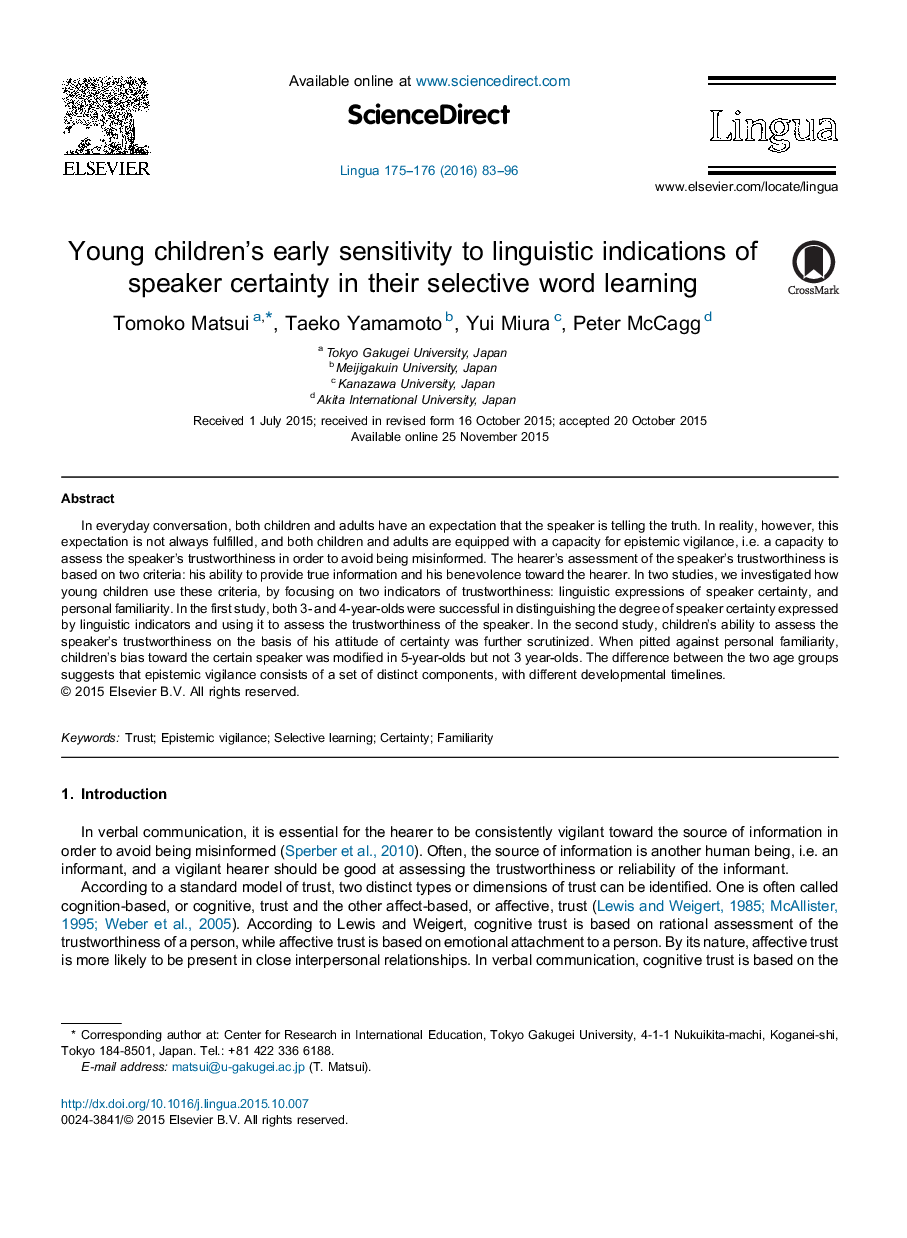| Article ID | Journal | Published Year | Pages | File Type |
|---|---|---|---|---|
| 935275 | Lingua | 2016 | 14 Pages |
•Children understand linguistic expressions of speaker certainty by 3 years.•They trust certain speakers more than uncertain counterparts.•5-year-olds also use personal familiarity to assess trustworthiness of the speaker.•Their sensitivity to personal familiarity modifies the bias toward certain speakers.
In everyday conversation, both children and adults have an expectation that the speaker is telling the truth. In reality, however, this expectation is not always fulfilled, and both children and adults are equipped with a capacity for epistemic vigilance, i.e. a capacity to assess the speaker's trustworthiness in order to avoid being misinformed. The hearer's assessment of the speaker's trustworthiness is based on two criteria: his ability to provide true information and his benevolence toward the hearer. In two studies, we investigated how young children use these criteria, by focusing on two indicators of trustworthiness: linguistic expressions of speaker certainty, and personal familiarity. In the first study, both 3- and 4-year-olds were successful in distinguishing the degree of speaker certainty expressed by linguistic indicators and using it to assess the trustworthiness of the speaker. In the second study, children's ability to assess the speaker's trustworthiness on the basis of his attitude of certainty was further scrutinized. When pitted against personal familiarity, children's bias toward the certain speaker was modified in 5-year-olds but not 3 year-olds. The difference between the two age groups suggests that epistemic vigilance consists of a set of distinct components, with different developmental timelines.
